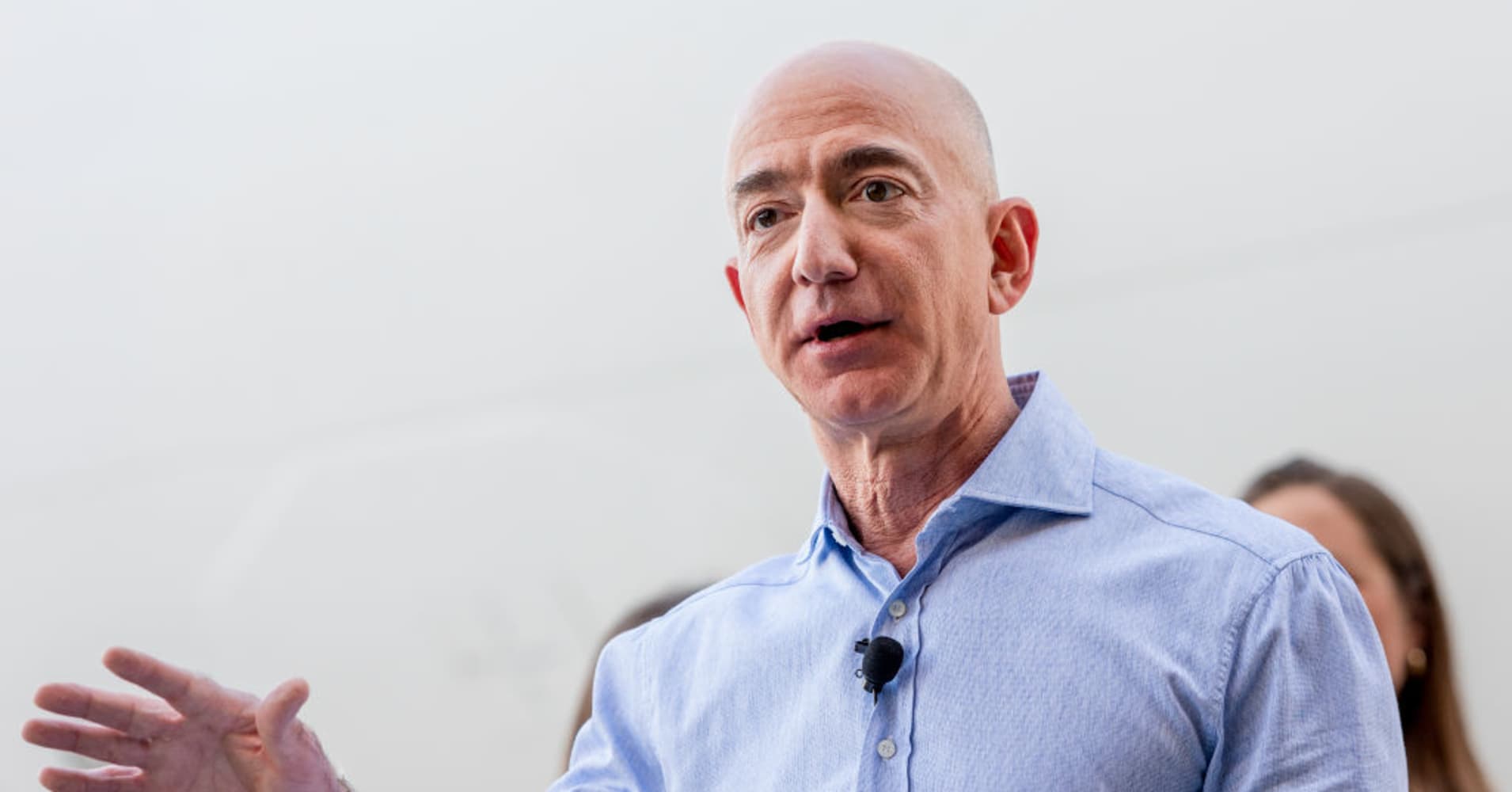
There's new and staggering data that support the fact that retailers should increasingly be scared of Amazon dominating e-commerce.
When consumers are ready to buy a specific product, nearly three quarters of them, or 74 percent, are going straight to Amazon to do it, according to a study by Feedvisor, which helps brands grow on e-commerce marketplaces. The group studied the shopping behaviors of more than 2,000 consumers in the U.S. who have bought something on Amazon within the past two years.
Amazon remains a looming threat for some of the biggest retailers in the country — like Walmart, Target and Macy's — that are trying to grow their businesses online. Shoppers are getting more comfortable with buying things from their smartphones, skipping trips to the mall. By the end of this year, Amazon is expected to account for 52.4 percent of the e-commerce market in the U.S., up from 48 percent in 2018, according to data from eMarketer.
Key to Amazon's success is its loyal base of paying Prime members, which surpassed more than 100 million people last year. They pay a membership fee of $12.99 a month or $119 a year for perks like free two-day shipping, free two-hour delivery in certain zip codes, discounts at Whole Foods grocery stores, and access to Prime Video and Prime Music. Fifty-eight percent of Amazon Prime members go to the site at least once a week to browse, Feedvisor said. Meanwhile, 45 percent of Prime members are buying something from Amazon at least once a week.
For many shoppers today, Amazon is also where they're starting a search on the internet, bypassing other search engines like Google, Yahoo and eBay. Sixty-six percent of consumers typically start a search for new products on Amazon, and 95 percent of those people say they're "satisfied" with the results that come up, according to Feedvisor.
Feedvisor said consumer loyalty to Amazon is at an "all-time high," with 48 percent of people visiting Amazon at least a few times a week, and 89 percent of people visiting Amazon at least once a month. Unfortunately for its rivals, "Amazon has deeply integrated itself into consumers' daily lives," the group said.
As Amazon expands more into bricks-and-mortar retail, now, analysts expect its threat will grow even larger. The company is reportedly planning to launch a new grocery chain. And while Amazon is also planning to shut all of its pop-up locations in malls, Whole Foods locations and Kohl's stores across the U.S., it's doubling down in its book stores, cashier-free convenience shops and its Amazon 4-star business, which sells knickknacks typically found on the website.
As its Prime membership base swells, Amazon is gaining new customers that are actually engaging more on the platform, too, Wells Fargo analyst Ike Boruchow said in a note to clients this week. The frequency of shoppers clicking on the site is climbing.
"Although Amazon's penetration of total web users is already very high ... the company is not having difficulty finding new customers even as their user base grows to remarkably high levels," he said. Wells Fargo estimates roughly 195 million people across the country browsed Amazon during the fourth quarter, which is equivalent to almost three quarters of all internet users in the U.S.
Also on Tuesday, Instagram announced a new feature where shoppers will now be able to buy products directly from brands within the photo-sharing app, targeting Amazon and also the e-commerce platforms that Walmart and Target are building.
Some of the first retailers trialing this approach to Instagram's in-app sales include Adidas, Kylie Cosmetics, Nike, clothing brands Uniqlo, H&M and Zara, and glasses retailer Warby Parker. Instagram said these companies will pay a fee to cover credit-card processing fees and other costs associated with the checkout process, making it another revenue funnel for the social media company owned by Facebook.
from Top News & Analysis https://ift.tt/2FoFogQ
No comments:
Post a Comment